It has been two decades since Maja Hoffman, the Swiss mega collector, patron and pharmaceutical heir established Luma Foundation—her platform supporting and producing projects by some of the world’s biggest artists. In 2013, it grew into Luma Arles, a sprawling campus in the French city which, eight years later, unveiled its centrepiece—a spiralling tower designed by Frank Gehry, its glittering facade designed to mimic the brushstrokes of Vincent van Gogh.
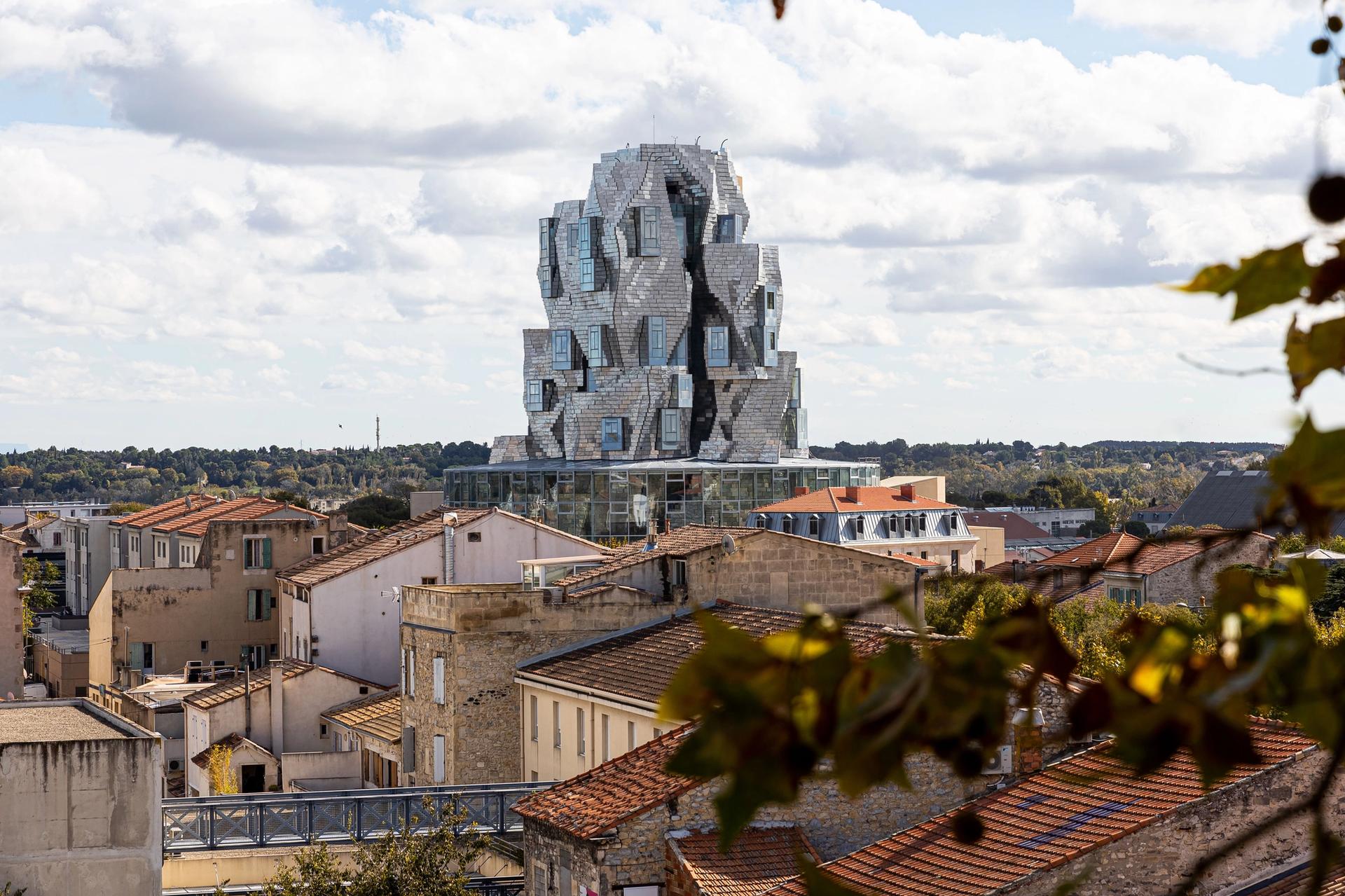
A 56m-tall tower, designed by Frank Gehry, is the centrepiece of the Luma Arles campus © Adrian Deweerdt
Sleek, expansive private museums of this kind often raise eyebrows. Yet Luma was founded with a mission to address critical issues such as human rights, and its projects have, in reality, regularly been boundary pushing, multi-faceted and socially engaged. This is certainly the case with a new string of shows—a remarkable 12 held across various spaces on site—that bring to the fore everything that the organisation does best, including taking its mission far beyond the manicured grounds of its French outpost.
Several of the shows have the feel of a blockbuster, but perhaps none more so than William Kentridge’s Je n’attends plus (I Am Not Waiting Any Longer). This exhibition is an accompaniment to the South African artist’s new opera, The Great Yes, The Great No, debuted at Luma Arles earlier this month, which puts a fantastical twist on a true story: that of a voyage from nearby Marseilles to Martinique in 1941, taken by artists and thinkers—Wifredo Lam and André Breton among them—looking to escape the ravages of war.
Kentridge’s reimagining places other avant-garde artists, such as Frida Kahlo, pioneers of the anti-colonial Négritude movement, such as Aimé Cesare and the Nardal sisters, and other important figures of the time on this journey—their faces appearing as cardboard masks. I Am Not Waiting Any Longer takes visitors to the heart of his process: there are research materials, such as photographs taken on the actual crossing; cardboard masks scattered across a wall; and intricate maquettes of the set.
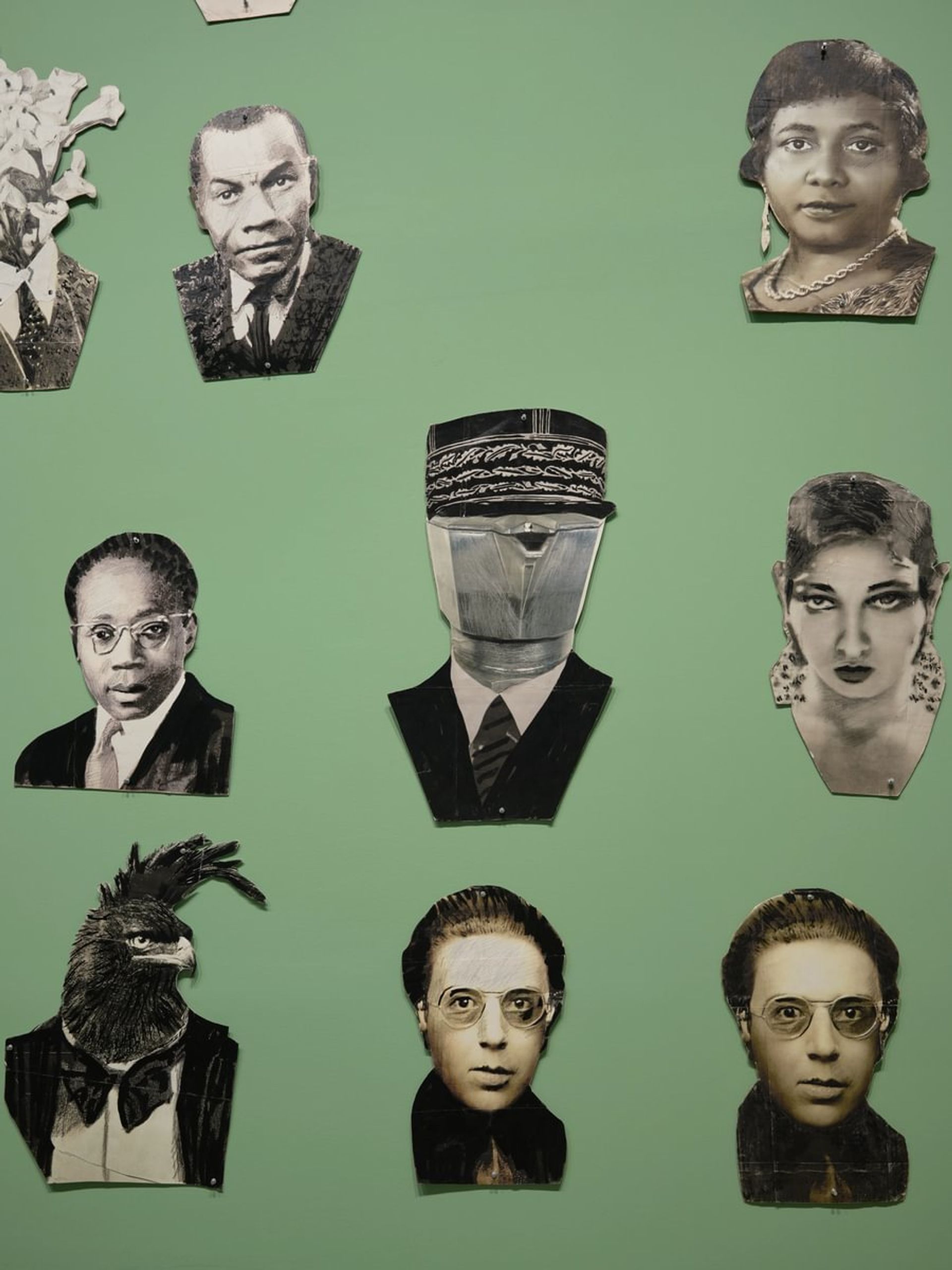
Cardboard masks from William Kentridge's opera The Great Yes, the Great No on display in his exhibition Je n’attends plus (I am Not Waiting Any Longer) © Victor&Simon—Grégoire d’Ablon
The show includes several other major works by Kentridge, too, a number of them in Europe for the first time. They include the video works More Sweetly Play the Dance, featuring a procession of characters marching across the screen—from flag bearers to exuberant dancers to figures on hospital drips—and Oh to Believe in Another World (2022), which focuses on the joys and devastation of the Soviet era. The installation Kaboom!, meanwhile, references the under-represented contribution of African men and women to the First World War.

Still from William Kentridge, More Sweetly Play The Dance (2015) Courtesy Maja Hoffmann / LUMA Foundation collection and the artist
The themes binding these installations together are clear—migration, oppression, utopia—and they feel particularly pertinent now, at a time when populism and fascism is shaking mainland Europe. Did Kentridge think about this when making the work? “The Great Yes, The Great No, it is about Surrealism as a response to fascism and colonialism, rather than it being about Hungary, and France, and everywhere else now,” he tells The Art Newspaper at the opening. “But the fact that those questions are in the air means they are ready to connect. If there are similarities, one makes the connection.”
In another one of Luma's grand warehouse spaces is an expanded version of Judy Chicago: Herstory, a career-spanning retrospective of the American artist’s work that has travelled from the New Museum in New York. Exclusive to Arles is reconstruction of her Feather Room (1966), a circular, illuminated room filled with feathers—a counterpoint, it has been suggested, to the more solid materials used within the male-dominated sculptors of the 20th century—and a Smoke Sculpture that Chicago used in a performance in the opening week. Near the restaurant, a show of work by Rikrit Tiravajina, known for his participatory installation, is held over two floors. It was previously hosted at MoMA PS1.
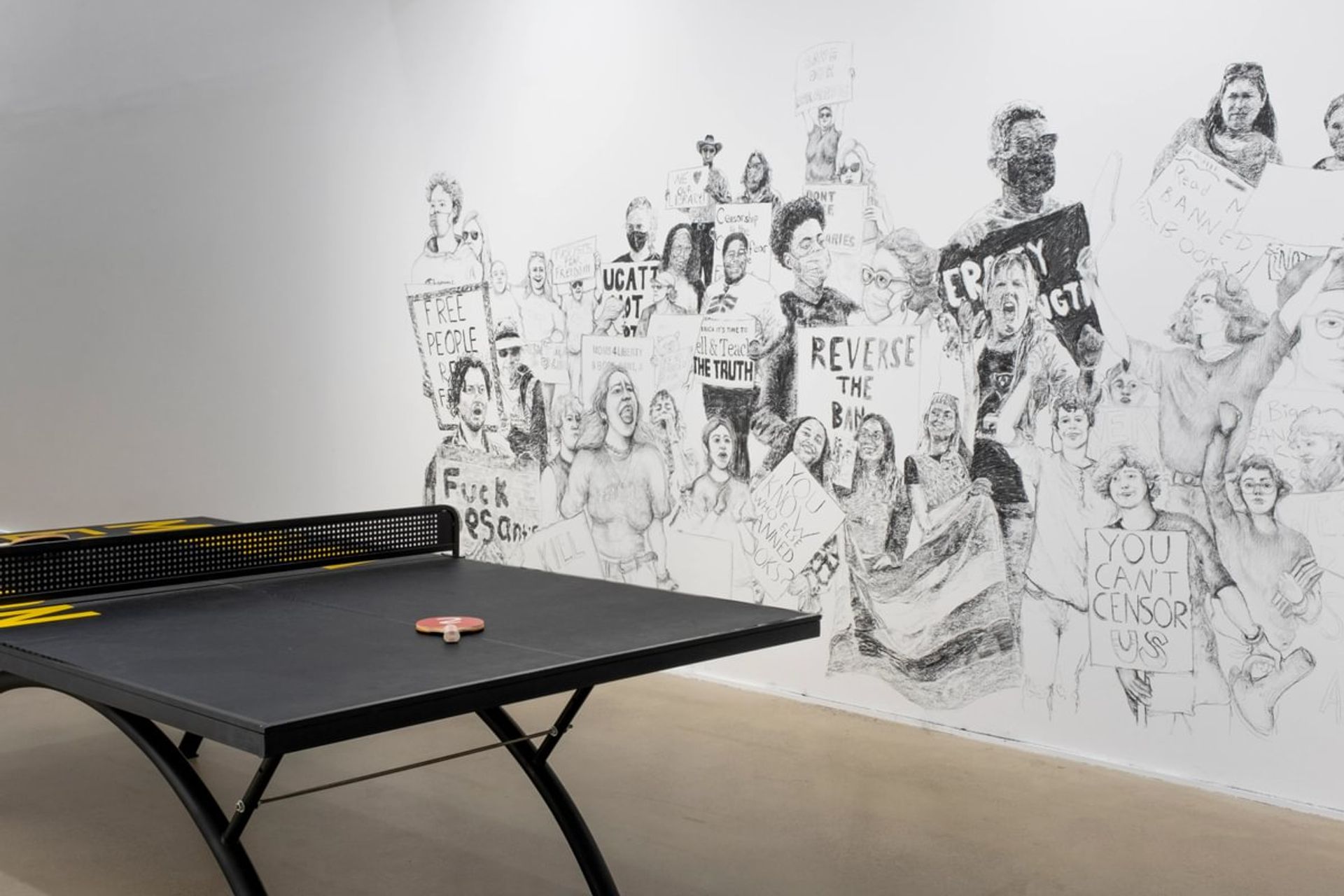
Rirkrit Tiravanija, installation view of A LOT OF PEOPLE, featuring untitled (up against the wall motherfuckers) (2023) and untitled (mañana es la cuestión) (2021) © Victor&Simon—Iris Millot
When she launched Luma Arles, Hoffman said the project was “not about hanging a collection, but social impact and activating the region”. This has resulted in projects such as Atelier Luma, a programme focused on the local ecology and economy, and it is the case for many of its temporary projects too. This includes a new initiative by Theaster Gates, the Chicago-based artist whose urban rebuilding projects in his hometown’s South Side have brought him huge acclaim.
Building on a project he hosted in the same Luma space last year, Gates presents La chant du centre, which has seen him transform the La Grande Halle into a functioning ceramics studio. Clay objects are being produced here, by local makers, in front of visitors, over several months—bringing a community around the act of production. (A central area called “the temple” will feature a DJ booth filled with Gates’s vinyls, and surrounded by shelves of ceramics.) There is also an emphasis on experimentation and cross-cultural exchange: some work, for example, will be created using an Anagama, a traditional Korean kiln, which Gates and the Luma team built on the grounds.

Theaster Gates, Le chant du centre (The song of the centre) (2024) © Victor&Simon—Joana Luz
What will happen to the work that is made is yet to be decided, but Gates sees the opportunity for the project as a whole to reach into the Arles community, and even right across to his work in Chicago. “I think that in some ways, my art projects become a trajectory that I hope Rebuild [Foundation, under which much of his cultural development practice is undertaken] can aspire to,” he tells The Art Newspaper. “In a sense it’s a trial run of values that I’d like to bring home.”
Like Kentridge, Gates, who is an established ceramicist himself, sees the potential broader political value, too. “I strongly believe that the political position, if there’s any, is you use your talent to demonstrate something great.”
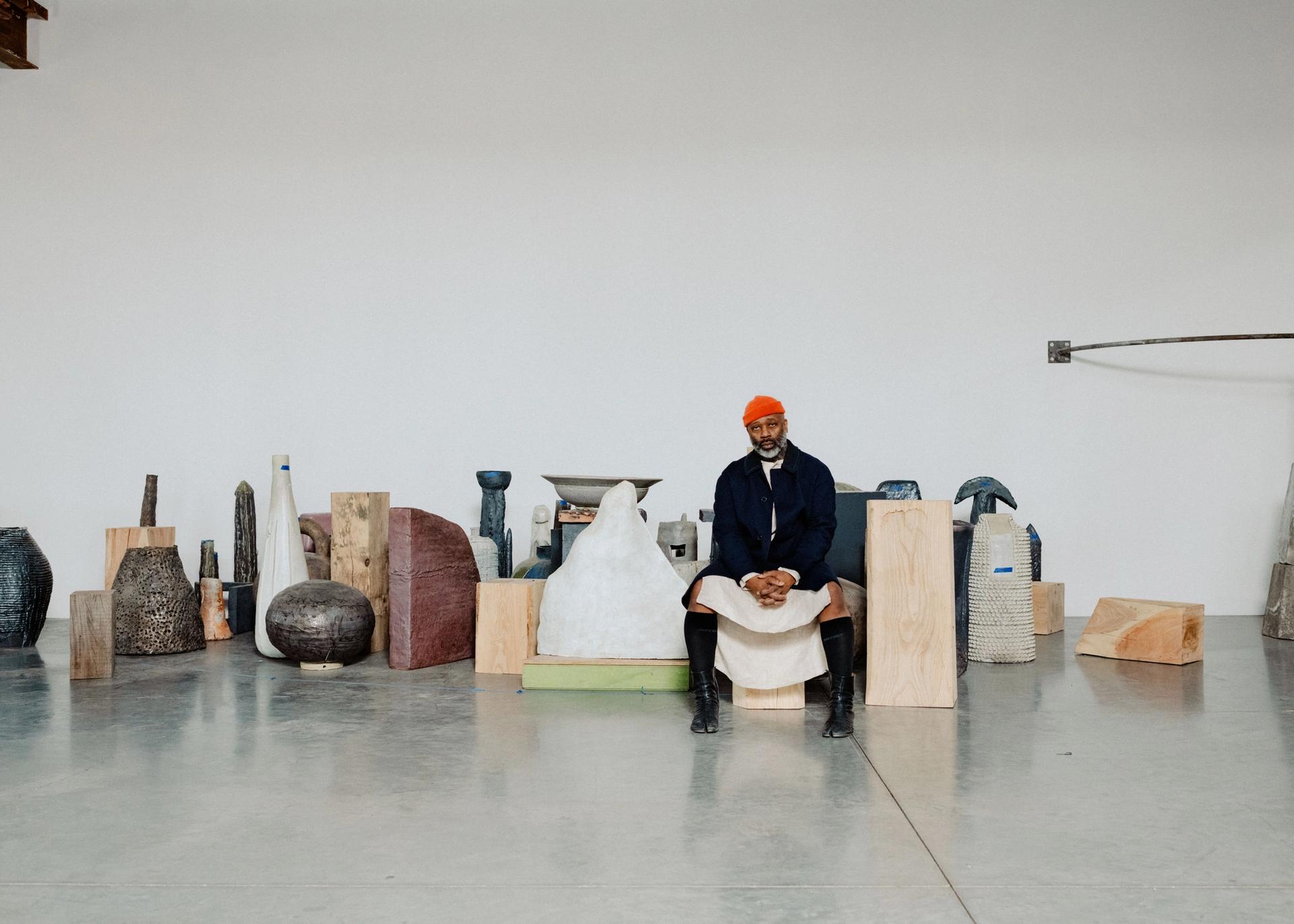
Theaster Gates, shown here in his Chicago studio, says he hopes his project in Arles can act as a “trial run” for the work of his foundation in the US Photo © Lyndon French. Courtesy of Theaster Gates Studio
That sentiment can be seen to carry throughout much of Luma’s current programme, though perhaps nowhere more so than on the upper floors of its soaring tower. There, Ebb, a creative studio led by the artist Neïl Beloufa, is hosting a project exploring topics such as generative AI and data sharing, seeking to move the conversation beyond the dangers and negatives they represent and show instead how they can be used to promote—and preserve—the work of artists.
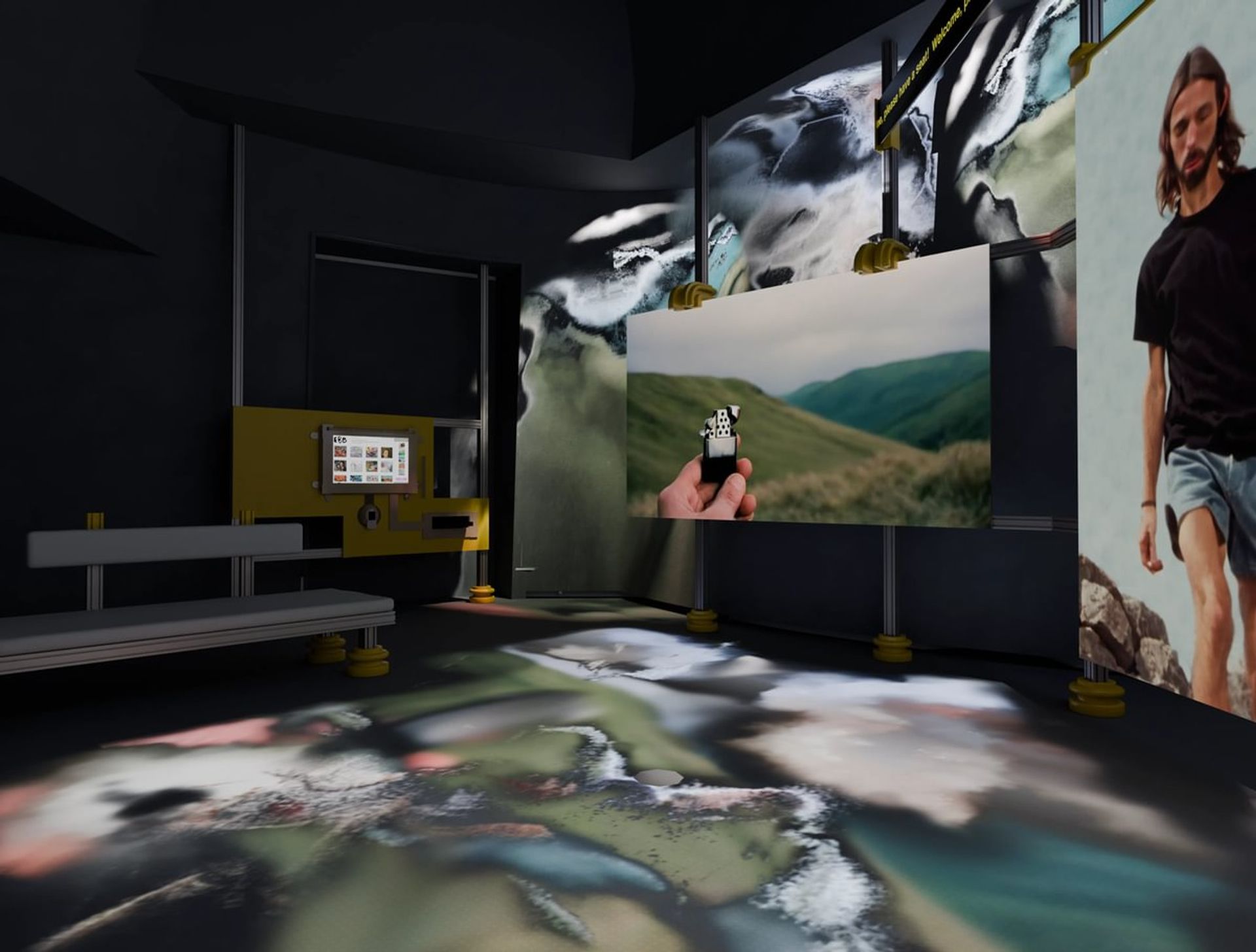
Ebb & Neïl Beloufa, Me Time, synthesis image (2024)
Visitors are invited to answer questions on a screen, or via a QR code, and their answers then go on to shape the film that plays out in the main space. The underlying visual language of the film will shift over the run of the show too, as different artists are invited to form it—the first is Jill Mulleady, who has based her environment on a childhood memory.
Beloufa sees the initiative as a service, and a necessity, in a world in which technology is rendering human creativity obsolete. “I think it's either we do it or we're dead,” he says. He hopes that the tools provided by Ebb can offer a chance to reclaim authorship of information, and of storytelling, for individuals all over the world.
These ambitions are lofty and open-ended, in a way that perhaps encapsulates Luma’s own position as a place where things are made, and thought through, as much as shown. It is an organisation that—with its seemingly ever-growing site and bottomless pockets—will likely long remain under scrutiny. For now, at least, it remains potent, and progressive, in a way that Gates summarises neatly.
“The revitalisation work that Maja does, in Arles, could be seen as something good or bad, because transformation hits people in different ways,” he says. “I think that the care that the institution has for artists… it’s not the financial investment [that matters most], it’s the belief that artists have important things to contribute. And they lead with that.”


